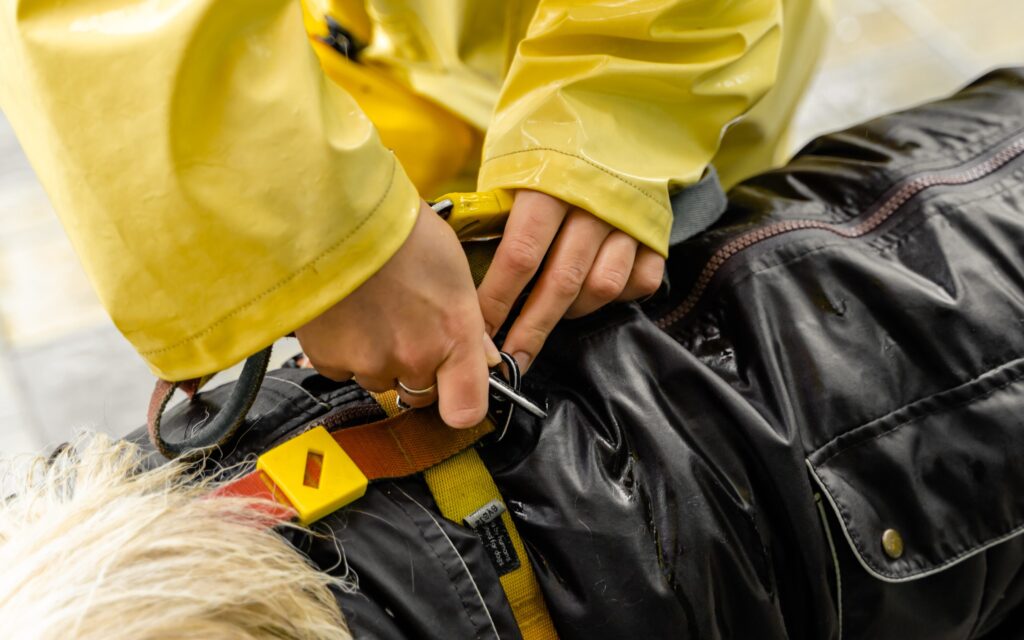
Table of Contents
ToggleTable of Contents:
1-The Benefits of Harnesses in Pet Training
1.1 Enhanced Control
1.2 Improved Safety
1.3 Reduced Strain
1.4 Minimized Risk of Injury
Types of Harnesses for Pet Training
2.1 Back-clip Harness
2.2 Front-clip Harness
2.3 No-pull Harness
Effective Usage of Harnesses in Training
3.1 Proper Fit
3.2 Positive Reinforcement
3.3 Gradual Familiarization
3.4 Consistency in Training
Conclusion
FAQS
Introduction:
Pet training is an essential aspect of responsible pet ownership. It not only ensures a harmonious relationship between pet and owner but also enhances the overall well-being of our furry companions. While various tools and techniques aid in training, one tool that has gained significant popularity in recent years is the harness. This article will explore how harnesses can help train your pet, focusing on their benefits, types, and practical usage. Whether you’re a new pet owner or a seasoned one looking to improve your training methods, understanding the power of harnesses can elevate your pet’s training
experience.
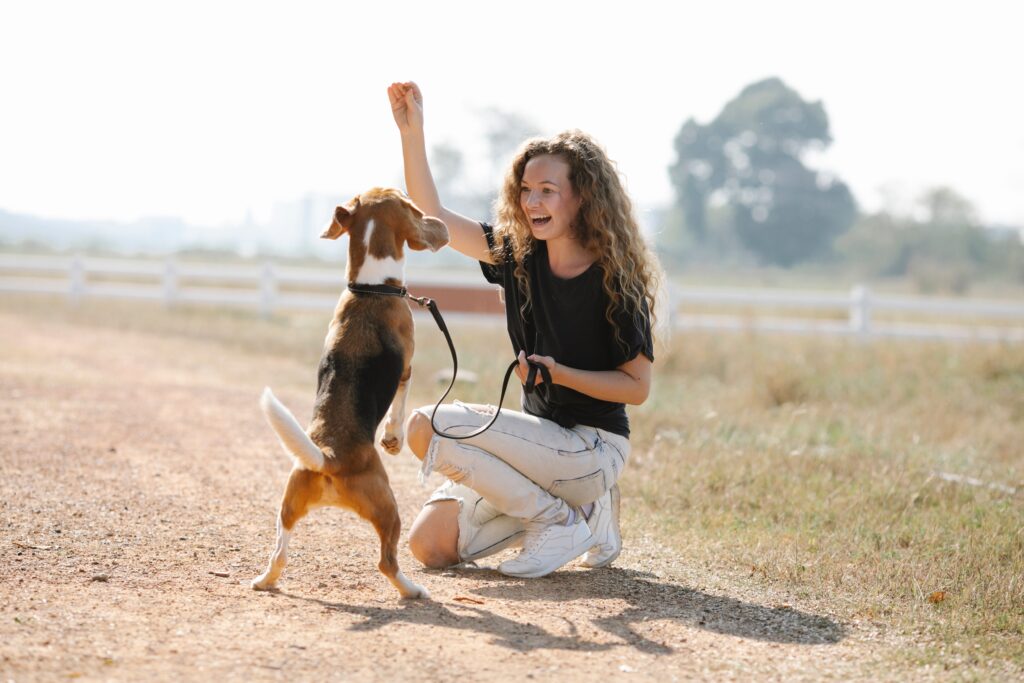
The Benefits of Harnesses in Pet Training:
Harnesses offer numerous advantages over traditional collars when it comes to training your pet. Here are some key benefits:
Enhanced Control:
Unlike collars that put pressure on a pet’s neck, harnesses distribute the force evenly across the chest and shoulders. This design offers better control and reduces the risk of injury during training sessions.
Improved Safety:
Harnesses prevent the risk of accidental slipping or escape, especially for dogs who tend to pull or have a smaller head size compared to their neck. With a well-fitted harness, you can feel confident that your pet is secure and less likely to break free during training exercises.
Reduced Strain:
For dogs that have a tendency to pull on walks, harnesses are a game-changer. The pulling force is evenly distributed across the body, reducing strain on the neck and minimizing discomfort. This feature is particularly beneficial for breeds prone to respiratory issues or tracheal collapse.
Minimized Risk of Injury:
Some dogs are prone to injuries due to their anatomy or medical conditions. Harnesses provide additional support and stability, reducing the risk of exacerbating existing injuries or developing new ones during training activities.
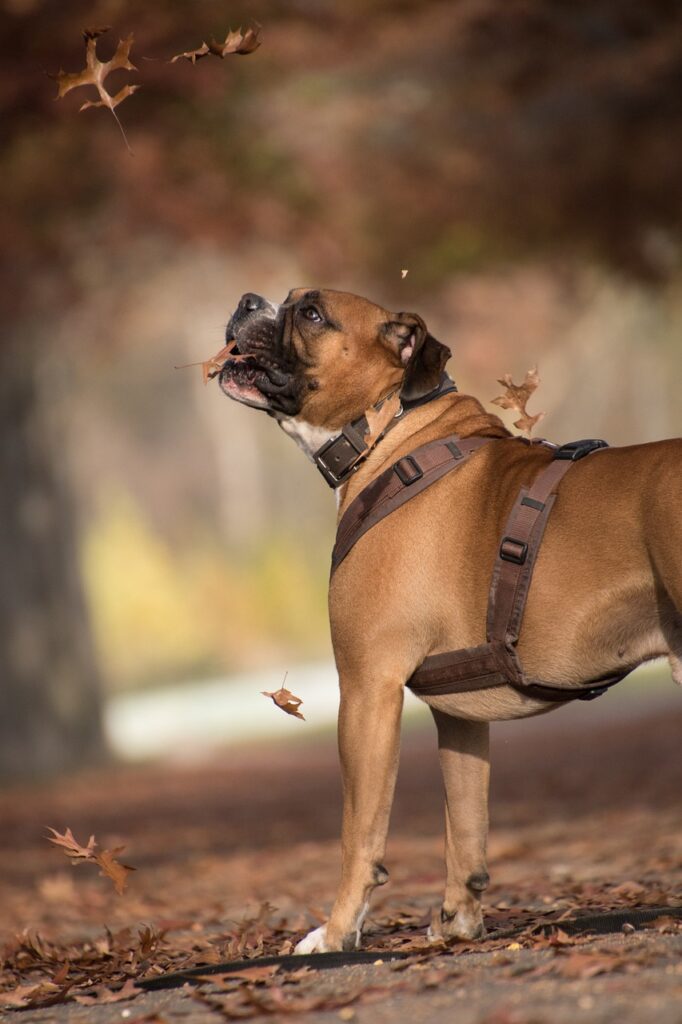
A Better Harness Will Save Your Friend from Many Problems
Types of Harnesses for Pet Training:
When it comes to harnesses, there is no one-size-fits-all solution. Different types of harnesses are available, each catering to specific training needs. Here are three commonly used harness types:
Back-clip Harness:
This type of harness features a D-ring positioned on the back, making it easy to attach a leash. Back-clip harnesses are suitable for well-behaved pets who have already mastered basic leash manners. They are excellent for walking and casual training sessions.
Front-clip Harness:
Designed with a D-ring on the chest area, front-clip harnesses provide better control by redirecting the pet’s attention toward the owner during walks. They discourage pulling and are ideal for training dogs who tend to lunge or lead with excessive force.
No-pull Harness:
No-pull harnesses typically combine both front and back attachment points, allowing for more control over dogs that have a strong inclination to pull. With the dual-attachment feature, these harnesses effectively discourage pulling behavior, making training sessions more manageable and enjoyable for both the pet and the owner.
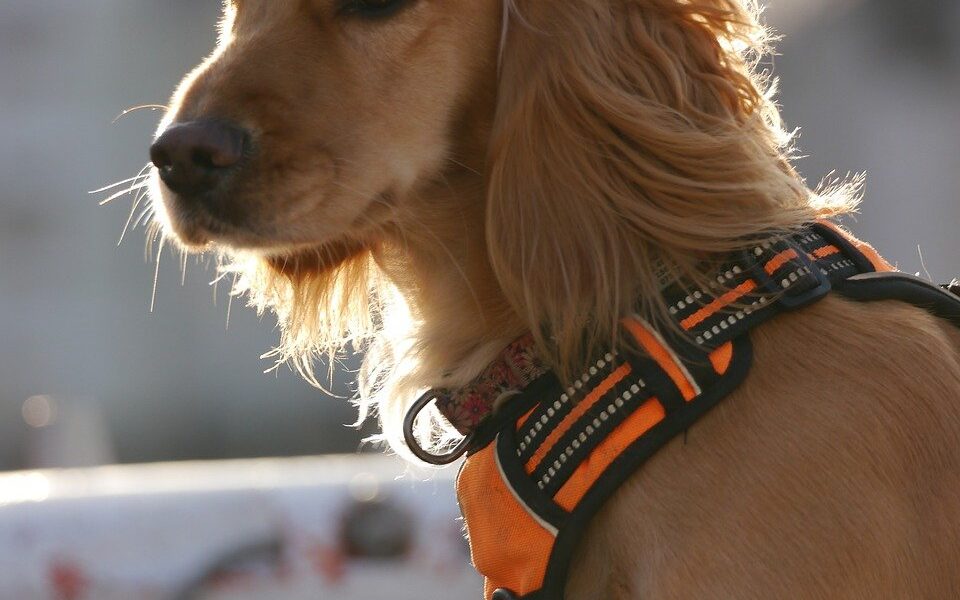
Effective Usage of Harnesses in Training:
To make the most of harnesses in your pet training efforts, it’s essential to follow some guidelines:
Proper Fit:
Ensuring the harness fits your pet correctly is crucial for comfort and effectiveness. Measure your pet’s chest and neck girth accurately and choose a harness size accordingly. A properly fitted harness
should be snug but not tight, allowing for comfortable movement.
Positive Reinforcement:
Pair the introduction of the harness with positive reinforcement techniques. Offer treats, praise, and rewards to create positive associations, helping your pet develop a positive attitude toward wearing the harness.
Gradual Familiarization:
Allow your pet time to adjust to wearing the harness. Start by letting them wear it for short periods indoors before gradually increasing the duration and introducing outdoor activities. This gradual approach will help them feel more comfortable and reduce any potential anxiety or resistance.
Consistency in Training:
Harnesses work best when incorporated into a consistent training routine. Use the harness during regular walks, obedience training, and other appropriate activities to reinforce desired behaviors and discourage unwanted ones.
Conclusion: Harnesses provide pet owners with a valuable tool for effective training sessions. Their benefits, including enhanced control, improved safety, reduced strain, and minimized risk of injury, make them an excellent choice for all pet owners. By selecting the right type of harness and following proper usage guidelines, you can optimize your pet’s training experience and foster a stronger bond between you and your beloved companion. Remember, patience, positive reinforcement, and consistency are key when harnessing the power of harnesses in your pet training journey.
FAQS:
Q1: What is the importance of pet training? A1: Pet training is essential for several reasons. It helps establish a strong bond between pet and owner, promotes obedience and good behavior, enhances communication, and ensures the safety of both the pet and those around them. Training also provides mental stimulation for pets, preventing boredom and potential behavioral issues.
Q2: How do harnesses benefit pet training? A2: Harnesses offer several benefits in pet training. They provide enhanced control, distributing force evenly across the chest and shoulders instead of the neck. This reduces the risk of injury and allows for better handling during training sessions. Harnesses also improve safety by preventing accidental slipping or escape, particularly for dogs that pull or have smaller heads compared to their necks.
Q3: What are the different types of harnesses available for pet training? A3: There are various types of harnesses available for pet training. The commonly used ones include back-clip harnesses, front-clip harnesses, and no-pull harnesses. Back-clip harnesses have a D-ring on the back for leash attachment, front-clip harnesses have a D-ring on the chest area, and no-pull harnesses typically have both front and back attachment points.
Q4: Which type of harness is suitable for a well-behaved pet? A4: For a well-behaved pet, a back-clip harness is often suitable. This type of harness is excellent for walking and casual training sessions. It provides control and stability, but it may not be as effective for dogs that tend to pull or have specific training needs.
Q5: How do front-clip harnesses help in reducing pulling behavior? A5: Front-clip harnesses are designed with a D-ring on the chest area. When the leash is attached to this front clip, it redirects the pet’s attention towards the owner during walks. This redirection discourages pulling by making it more difficult for the pet to exert forward force, making walks more manageable and encouraging better leash manners.
Q6: What is a no-pull harness, and how does it discourage pulling? A6: A no-pull harness typically has both front and back attachment points. By utilizing the dual-attachment feature, it gives the owner more control over dogs that have a strong inclination to pull. The design helps distribute the pulling force and redirects the pet’s attention, making it more challenging and uncomfortable for the pet to pull. This discourages the pulling behavior over time.
Q7: How can I ensure the harness fits my pet correctly? A7: To ensure the proper fit of a harness, measure your pet’s chest and neck girth accurately. Refer to the manufacturer’s size chart and choose a harness size that corresponds to your pet’s measurements. A well-fitted harness should be snug but not too tight, allowing for comfortable movement and preventing slipping or chafing.
Q8: How can I make my pet comfortable with wearing a harness? A8: To make your pet comfortable with wearing a harness, introduce it gradually. Start by letting your pet wear the harness for short periods indoors, providing treats, praise, and rewards to create positive associations. Increase the duration gradually and engage your pet in enjoyable activities while they are wearing the harness. This gradual familiarization helps reduce any potential anxiety or resistance.
Q9: Is it necessary to introduce the harness gradually to my pet? A9: Yes, it is beneficial to introduce the harness gradually to your pet. This allows them to adjust and become familiar with the sensation of wearing it. By starting with short periods and gradually increasing the duration, you help your pet feel more comfortable and prevent any potential negative associations or aversion towards the harness.
Q10: How can I incorporate harnesses into my pet’s training routine effectively? A10: To incorporate harnesses into your pet’s training routine effectively, use the harness during regular walks, obedience training, and other appropriate activities. Consistency is key. Reinforce desired behaviors through positive reinforcement techniques, such as treats, praise, and rewards. Use the harness as a tool to redirect and discourage unwanted behaviors. Remember to be patient, consistent, and attentive to your pet’s needs throughout the training process.


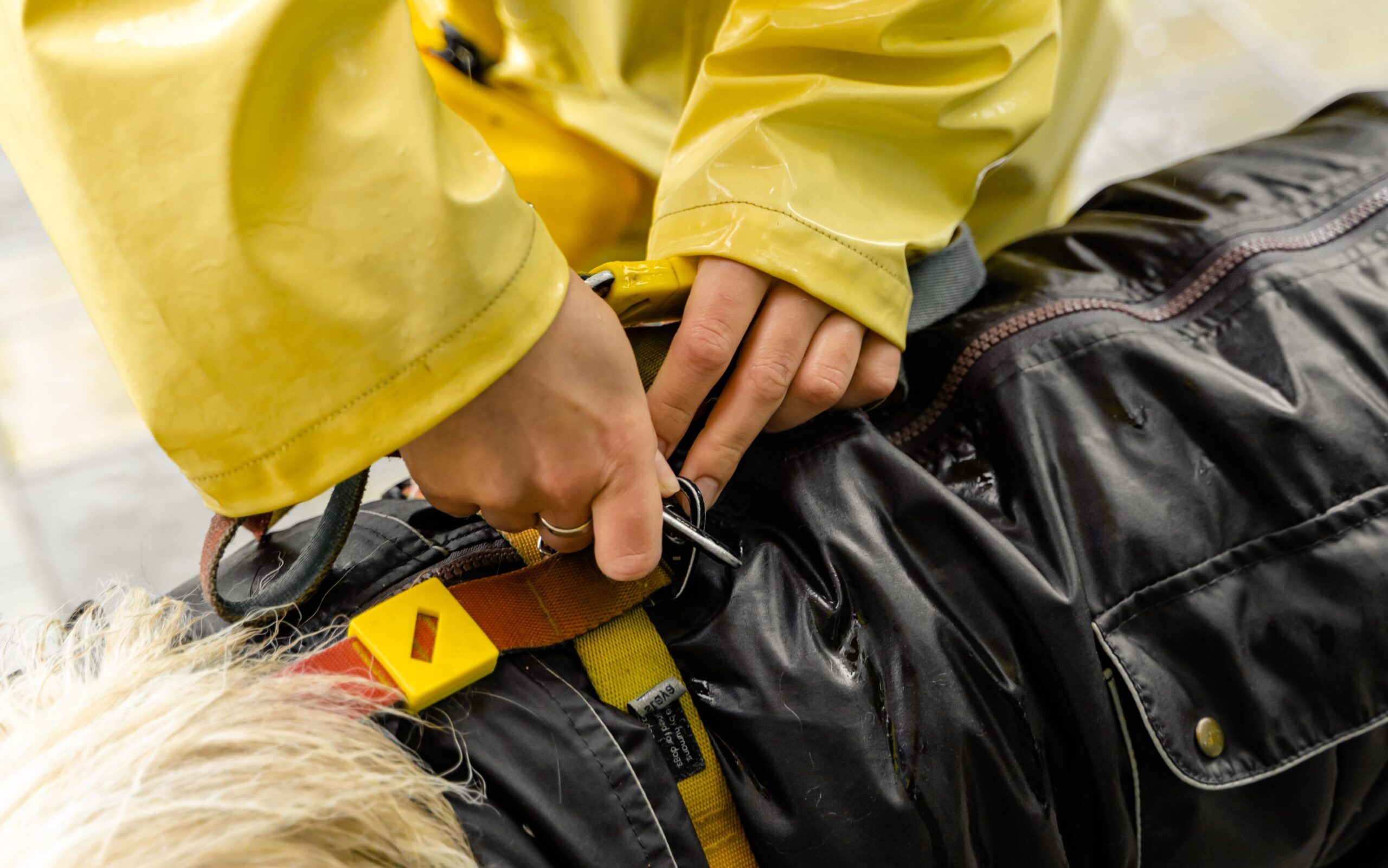


1 thought on “Benefits Of Pet Training With Harnesses”